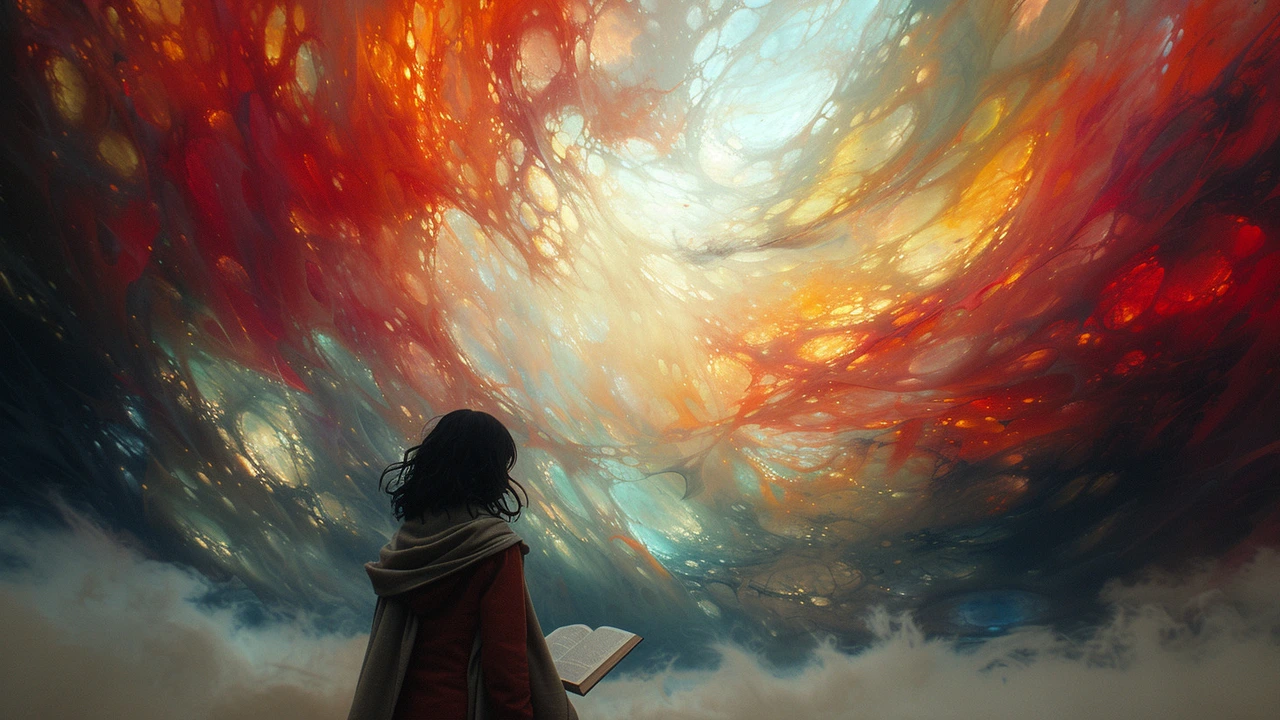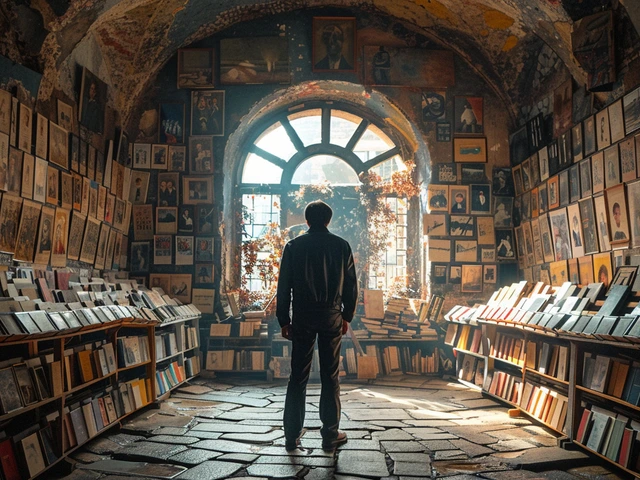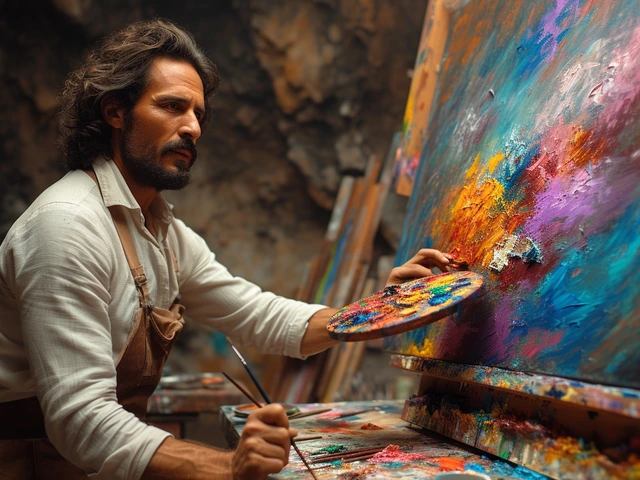Navigating Colorful Chaos: What is Abstract Expressionism?
Uncover your art detective goggles, my artistically inclined friends, for we are about to embark upon a journey into the swirling vortex of confusion, of vibrant colors, of undefined forms, of deep, hidden meanings. Yes, dear art lovers, we're talking about Abstract Expressionism today. This unpredictable, seemingly direction-less art movement, which was born in the mid-20th century, has pretty much earned a lifetime award for making art viewers scratch their heads in wonder. So buckle up, while we delve into this bemusing world, peeling back the layers of chaos, one brush stroke at a time.
Fractured Beauty: The Origins and Development of Abstract Expressionism
The roots of Abstract Expressionism sink deep into the rich soil of avant-garde European art, particularly the movements of Surrealism and Cubism. After weathering the stormy tempests of two ghastly World Wars and making its merry way to the United States, Abstract Expressionism burst onto the New York art scene post World War II, promising to shatter all conventional notions of ‘beauty’. Indeed, it was the tidal wave that swept away any remaining shackles of realism in modern art. Remember kids, it wasn’t considered cool anymore to replicate reality- it was all about distorting it!
Fingerprints of the Master: Styles of Abstract Expressionism
Did you know that Abstract Expressionism is actually a big, happy family of styles, each with its own distinct eccentricities? Well, perhaps not always happy and certainly not always big, but definitely, unquestionably unique. There are primarily two genres within this art movement:
- Action Painting
- Color Field Painting
Embracing Inner Chaos: Deciphering the Philosophy of Abstract Expressionism
No, my friends, that bizarre painting you see isn’t just random chaotic strokes with no meaning. We tend to relate chaos with a lack of order, but Abstract Expressionism takes that chaos, gives it a big bear hug and uses it to create something of profound meaning. The hypothesis driving Abstract Expressionism was the belief that by delving into their subconscious and letting their instincts take over, artists could generate authentic, powerful works of art that were an accurate representation of their mental and emotional state. Yes, essentially a visual diary of their emotions. A bit like your kids telling you about their day in drawings, only much messier and perhaps even more convoluted.
Decoding the Abstract: Interpreting Abstract Expressionist Art
I won't lie to you - interpreting an Abstract Expressionist work of art can be as challenging as explaining the concept of social distancing to a toddler (yes, Maeve, I'm looking at you). It’s like attempting to piece together a puzzle, and it's not unusual to feel like the puzzle pieces simply do not fit. But that's the fun part. The beauty of this genre is that it allows for a multitude of interpretations, depending on who's viewing it. So next time you're at an art museum, throw away your inhibitions and dive deep into the unchartered waters of interpretation. Remember, there are no wrong answers when it comes to abstract expressionist art.
Titans of Abstract Expressionism: Jackson Pollock and Mark Rothko
You can't possibly talk about Abstract Expressionism without mentioning Jackson Pollock and Mark Rothko. Famed for his unique method of dripping and splashing paint on canvas, Pollock was a pioneering force in the world of Action Painting. Rothko, on the other hand, was a key figure of the Color Field Painting camp. His large scale, luminous rectangles of color are a testament to the emotional depth and complexity that color alone can convey.
A Walk Down Memory Lane: The Abstract Meets The Expressionist
I remember the first time I came across the work of Pollock, or "Jack the Dripper", as he was sometimes fondly referred to - during my art school days in Sydney. It was a large, swirling mass of colors and lines, seemingly made by a toddler. My initial reaction was a mixture of confusion, amusement, and curiosity. Studying it further made me understand the chaos. I realized that each line or color applied with vigor was in perfect harmony with the others. They needed each other for the composition to be complete. It was a riot of emotions held together by invisible threads of silent agreement.
Abstract Expressionism: Impact and Legacy
Here's the real kicker - despite its chaotic nature, Abstract Expressionism was a game-changer in the art world, not just for its bold, innovative techniques but for ushering in the era of American dominance in the world of modern art. It sowed the seeds for subsequent movements like Pop Art and Minimalism, and its legacy continues to permeate contemporary art today. Abstract Expressionism was much more than just a collection of random paints splashed on a canvas - it was, and remains, a mark of artistic freedom and expression.
Wrapping up the Chaos: Final Thoughts on Abstract Expressionism
At its core, Abstract Expressionism was the response of a post-war generation of artists to the troubled and changing world around them, an attempt to make sense of the chaos through art and personal expression. It was a brave movement that dared to defy the norms, to step into a realm where normal was absurd and strange was beautiful. Abstract Expressionism may not always make sense. However, like a Jackson Pollock painting hanging on your wall, there is always order in its chaos, meaning in its randomness, and beauty in its apparent absurdity. And that, my friends, is the true charm of Abstract Expressionism.



